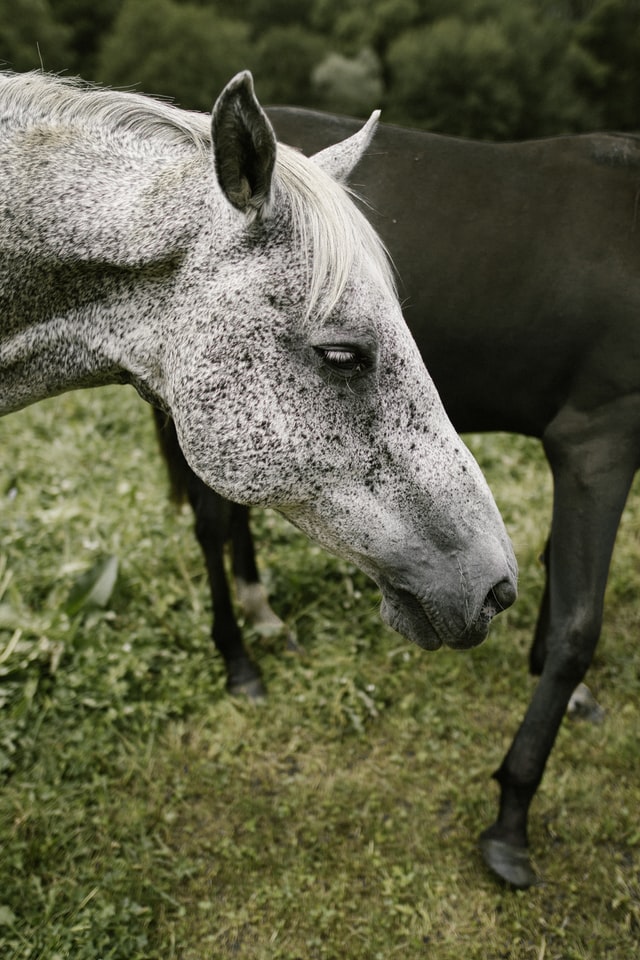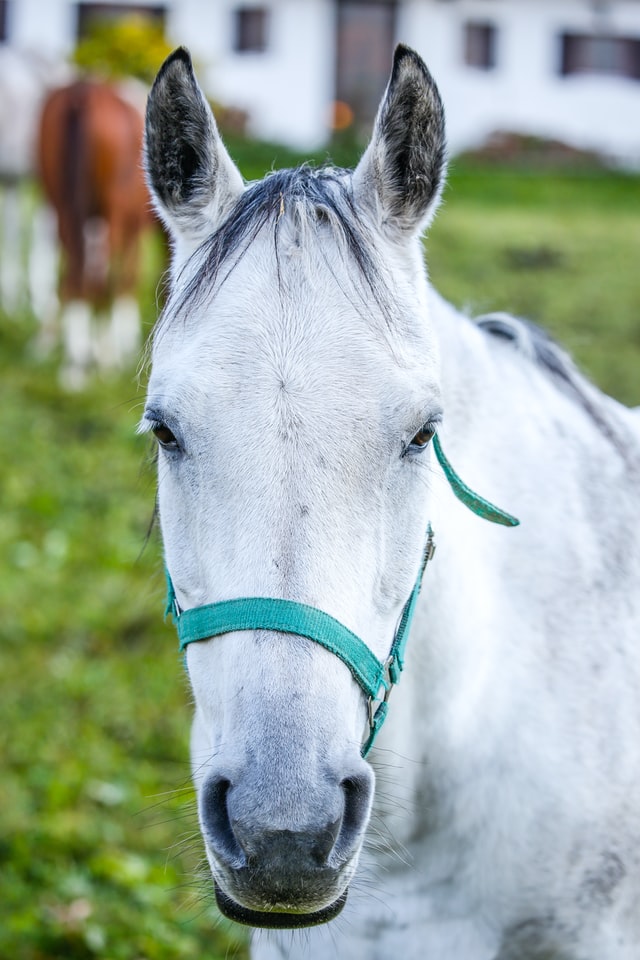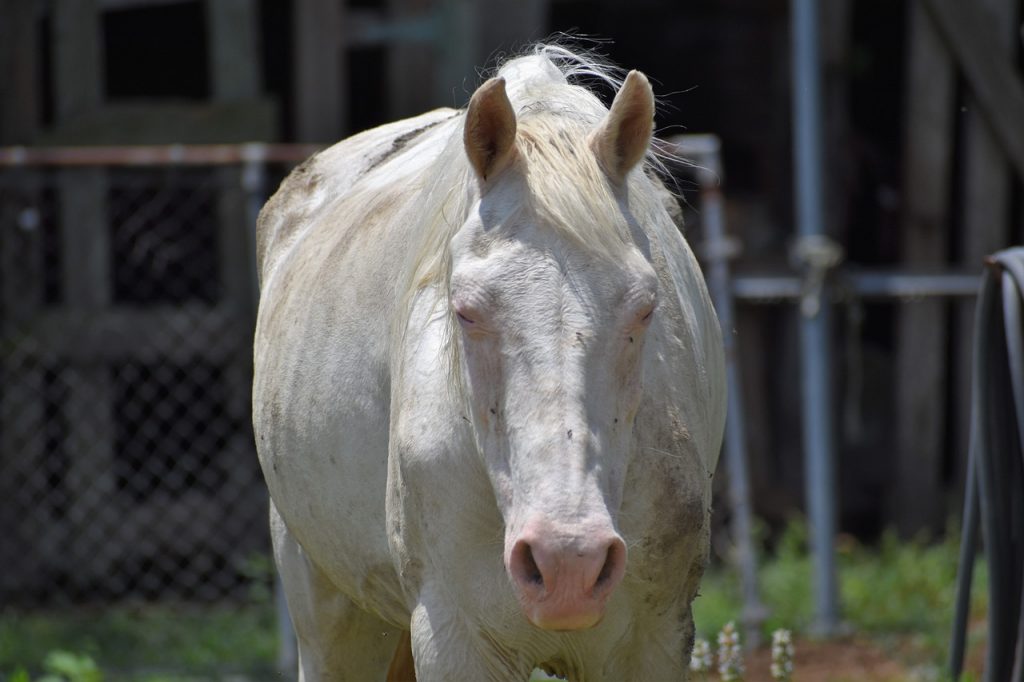To the unknowing observer, a truly gray horse will appear to be white. Learn how to distinguish between whites and grays.
Someone who has no involvement with horses may look at a horse and say “this horse is white,” when in fact, the horse is gray. There are very few true white horses in the world, which are not to be mistaken with albinos.
There are many more gray horses, with actual gray hairs covering their bodies, and lots of gray horses with white hairs covering their bodies.

Definition of a Gray Horse

A gray horse is any horse of white or gray coat color, with black skin. Even if the horse has completely white hairs all over the body, with no trace of a darker color, if the skin is black then the horse is gray.
Do not confuse white markings on a gray horse as being pink skin – often, a gray horse will have a facial marking (blaze, snip) or leg marking (sock, stocking) that is not visible because the entire horse has white hairs, but these markings will cause the underlying skin to be pink.
On any horse, gray or colored, the skin under a white marking is pink, but the skin on the rest of the body is black. To check for black skin, look at the skin under the tail.
A gray horse has any color hairs on the body, which are mixed in with white hairs. Gray horses tend to get lighter in color as they age, because progressively more white hairs replace colored hairs with each shedding. Although any horse with both colored and white hairs all over the body is called “gray,” this gray can be over black, bay, chestnut, or any other horse color.
A gray horse that looks white has had all of his colored hairs replaced with white hairs. For some horses, a white coat happens early in life. For others, a white coat is indicative of their old age.
Also, do not confuse normal graying due to age with a gray horse – many old horses will have some graying around their eyes and muzzle, but true gray horses will become grayer all over their body.
There is a specific gene locus in horse DNA that indicates whether the horse will be gray or not. Grays should not be confused with roans, who have the same mixture of white and colored hairs from the time they are born to the time they die. Roans do not get lighter with age.
Genetics of Gray Horses
The gene for the graying is located at the G locus. The presence of the dominant G allele will cause the horse to be grey. Therefore, a horse with a homozygous dominant gene pair (GG) or a heterozygous gene pair (Gg) will display the gray phenotype.
A horse with the recessive gene pair (gg) will not be gray – he will be a regular color such as black, chestnut, bay, etc. The graying gene is distinct from the regular color genes for black and chestnut (the two most basic colors, from which all other coat colors are derived).
Therefore, a gray horse may have genes for black coat color and also for gray. Please see Genetics of Horse Color for more information on black, chestnut, and their modifications.
Definition of a White Horse

A true white horse has white hairs over his whole body, with pink skin underlying them. True whites are fairly rare. They are also very easily sunburned due to their sensitive pink skin.
Genetics of White Horses
The gene for white coat color is additional to the genes for normal colors, such as black and chestnut. Therefore, a horse may have chestnut color genes, but the presence of the dominant white gene trumps the chestnut, and the horse will be white. This gene is at the W locus.
White color is the result of the presence of the dominant white gene, so any horse with a Ww gene pair will be white. A recessive gene pair (ww) will allow the horse’s other color genes to be displayed. Therefore, a chestnut horse will have chestnut color genes and a ww gene pair. (And, they will also have a gg gene pair!)
The homozygous dominant white gene pair (WW) is never seen, because this pair is what’s called a “lethal gene.” Any fetus with the WW pair will not live to be born. The reason for this is not yet known. Therefore, any true white horse always has a Ww gene pair.
Albino Horses

An “albino” is any mammal that licks pigmentation. An albino horse will have all white hair, pink skin, and no pigmentation in his eyes. An albino’s eyes will appear pinkish as a result. A white or gray horse will still have colored eyes – usually brown, but they can be blue too.
Possible Breeding Combinations from Gray and White Horses
Breeding a normal-colored horse to a gray will result in either 50% grey babies or 100%. Breeding to a white horse will result in 50% white babies and 50% colored babies. Breeding two true white horses together will result in 25% chance of abortion, 50% of white, and 25% chance of color.










